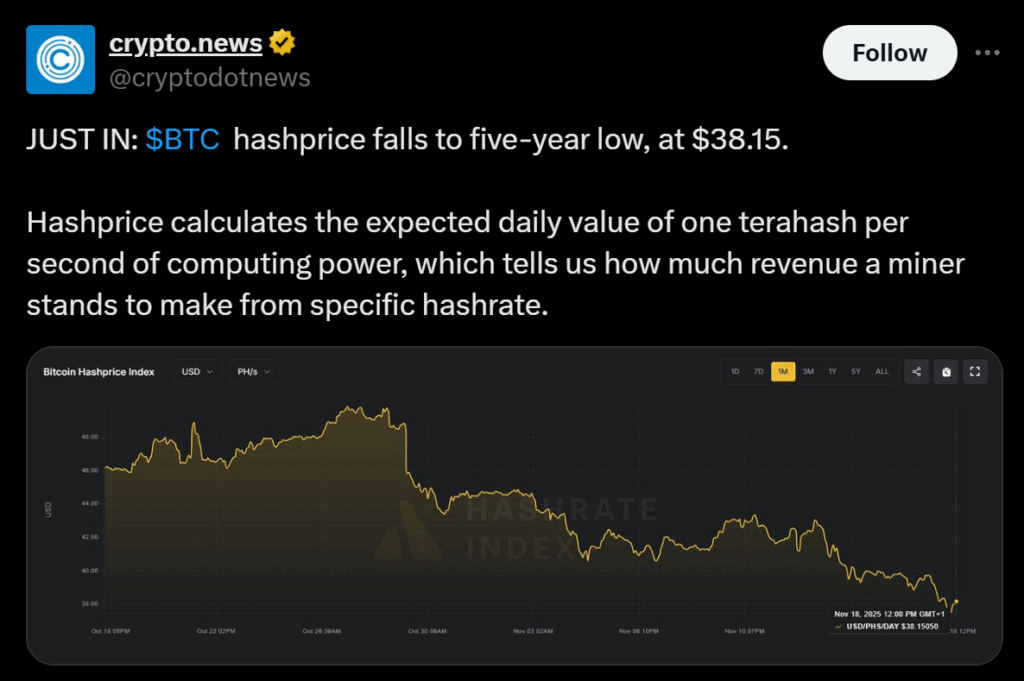- Bitcoin’s hashprice has fallen to a 5-year low at $38.2 PH/s as price, fees, and network difficulty weigh on miner revenue.
- BTC sits near $91K — down 30% from the October peak — while difficulty and hashrate remain near records.
- Mining stocks continue to slide, with the WGMI ETF down 43% from highs as the sector struggles through a harsh profitability cycle.
Bitcoin’s hashprice has collapsed to its lowest point in five years, now sitting at just $38.2 per PH/s, according to new data from Luxor. Hashprice represents how much revenue a miner can expect per unit of hashrate, and with the current market setup, miners are earning less than at any point since 2020. With BTC down sharply from its highs and network difficulty still sitting near records, the pressure across the mining sector is reaching a breaking point.

Why Hashprice Is Crashing So Fast
Hashprice is shaped by four variables: BTC’s market price, mining difficulty, the block subsidy, and transaction fees. Three of those four are currently pushing downward. Bitcoin is trading near $91,000, roughly 30% below its $126,000 October peak. Network difficulty, meanwhile, remains near an all-time high of 152t, showing miners are competing harder than ever for fewer rewards. Even worse, transaction fees are extremely low — high-priority confirmations cost around 25 cents — eliminating what is usually a key revenue boost during volatile markets.
At the same time, Bitcoin’s hashrate remains elevated at 1.1 ZH/s, which continues to thin profit margins across the sector. More machines are fighting for the same reward, and with price weakness, that instantly translates into falling hashprice.
Mining Stocks Continue Their Deep Slide
The pain isn’t limited to on-chain metrics. Public mining stocks have been collapsing for weeks as investor confidence pulls back. Many companies had already shifted toward AI infrastructure as an alternative revenue stream, but the market correction has still dragged valuations lower. The CoinShares WGMI mining ETF is down 43% from its peak, trading just under $41, signaling just how aggressively the sector has repriced.

What This Means for Miners Going Forward
And here is the key takeaway: the industry is entering one of the harshest post-halving environments in years. Unless BTC recovers above key psychological levels, miners will continue operating on razor-thin margins, forcing less efficient players offline. Historically, periods like this precede major hash-rate resets or consolidation waves — but they also tend to create strong setups for long-term recoveries once price stabilizes.














